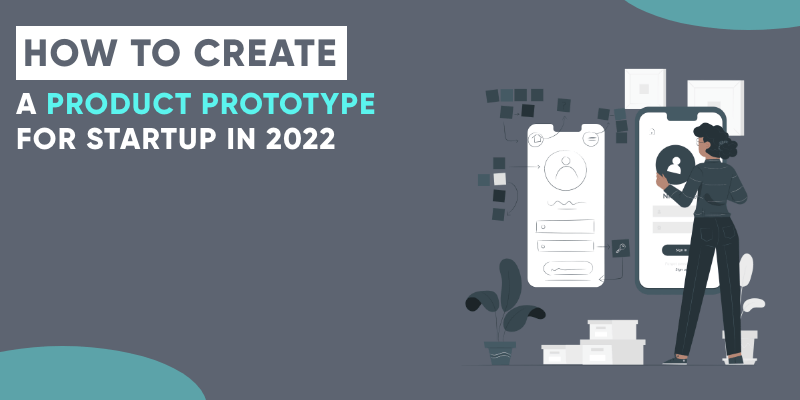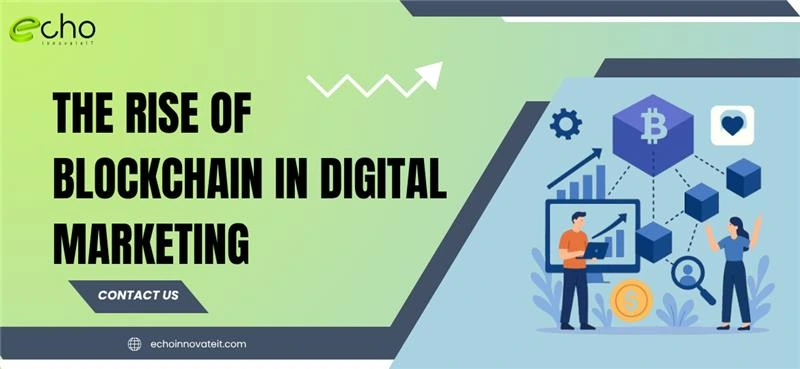Producing many prototypes during the product development process is an often ignored but crucial phase in the process. Even at the early stages of concept development, a crud prototype is useful for fine-tuning ergonomics and aesthetics. You should create a product prototype in such a way that it gives a glimpse of the exact working product.
Prototyping is one of the few ways for inventors to thoroughly visualize the final product’s appearance and feel before investing in a full development cycle. Some businesses will try to cut corners in the design process by developing the product without prototyping multiple design iterations.
This technique frequently results in a less desired outcome or greater overall project expenditures. This is frequently the outcome of having to change a fully planned product rather than a rough exterior surface model. Want to know how to make a prototype?
In this blog, we will cover all the parameters like why you should build a prototype for a product, how to create a product prototype, the development cost, and more.
What Is A Prototype?
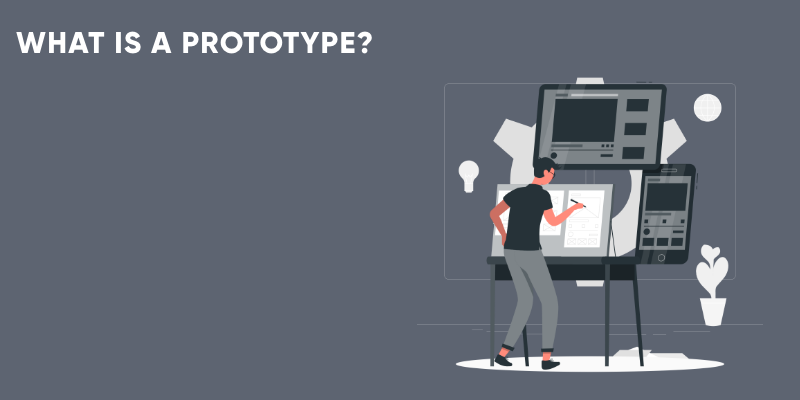
A prototype is a representation of the solution you wish to build. Without involving a developer, you may mock every interaction and view so that it can be experienced in the same way as a fully created product.
You can demonstrate all of the features you wish to include in your app (or any other type of solution in that instance), validate your concept and double-check the overall UX approach.
It’s up to you how you want to use a prototype, based on your needs and the stage of the project.
Types of the prototype:
Product Prototype: A prototype is a replica of a product that is used as an early model to test your product and get feedback from stakeholders before they can invest in your idea.
Services Prototype: The service prototype has the objective of replicating, as much as possible, the final experience of interacting with the service, in order to test and validate all the design choices.
Let’s understand more about product prototype:
Different Types of Product Prototype.
High-Fidelity User Prototypes
- Working simulation with a realistic appearance.
- It’s useful for informing stakeholders about a proposed product.
- It’s used in defensive user testing to check if they’ll like it, rather than to see if they won’t.
Live-Data Prototypes
- Developers created a very modest implementation to demonstrate that it works.
- Has real-time access to data and delivers real-time traffic.
- Hasn’t been turned into a “product” (no test automation, SEO, localization, etc).
Low-Fidelity User Prototypes
- It’s essentially an interactive wireframe (doesn’t look real).
- Interactive designers created this to test the workflow.
- Simulates the process of early detection of usability concerns.
Feasibility Prototypes
- For the development of new technology prototypes (ex. updated algorithm).
- Engineer only writes enough code to see if it’s possible.
- Aids in the understanding of technical risk, which is frequently linked to performance.Aids in the understanding of technical risk, which is frequently linked to performance.
Why Should You Build A Product Prototype?
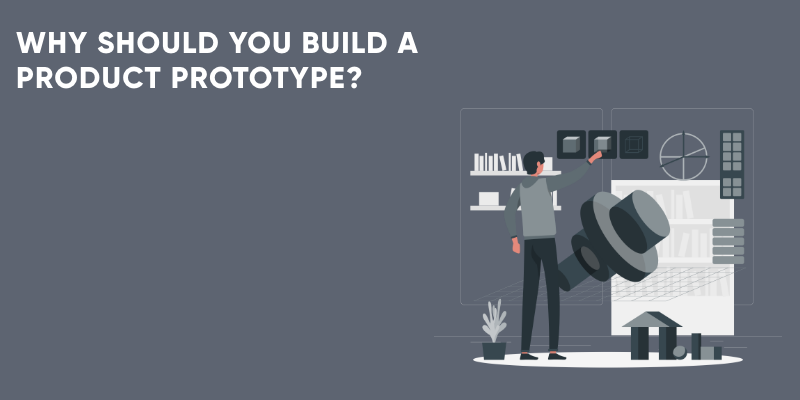
Let’s have a look at some of the advantages of prototype development:
Finding your Product-Market Fit
A prototype allows you to evaluate a product’s feasibility without wasting time and money building something that doesn’t satisfy the needs of the users.
Rather than racing to market, prototyping allows you to take a pause, assess the situation, and see how the market reacts.
You can then improve your designs and invest in creating a long-term product.
Adding Value for Users
The user is at the center of prototyping. It’s all about making a better product for people (why would they use it otherwise?). Extensive user testing should be done on your designs.
Without knowing who they are and what they want, it’s hard to provide value – to make their experiences memorable and their moods gratified.
Every piece of feedback you get is information that shows you where you need to improve in order to confront those challenges head-on.
Attract Investors
If you want to raise money for a new product, you’ll need prototypes. Investors will want to witness a prototype of your design in action.
Prototyping, like acquiring buy-in from key stakeholders, allows investors to better envision your end-product, making it a far more appealing offering.
Refining Your Designs
Feature creep (sometimes known as mission creep) is a real thing. It was also expensive. It’s easy to get carried away with ideas when you first begin your design adventure.
When prototyping, you can immediately see how users react to these added features and whether they’re worthwhile.
To put it another way, you need to chip away at anything that is preventing you from providing the best possible user experience.
Importance Of Product Prototyping
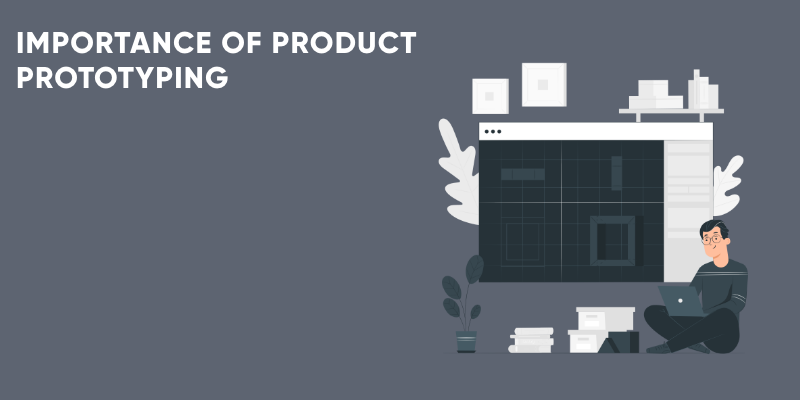
To put it another way, you need to chip away at anything that is preventing you from providing the best possible user experience.
Evaluate Technical Feasibility
Prototyping allows you to bring a concept together and discover which portions of it are difficult or impossible to implement. Prototyping can thus reveal unanticipated physical, technical, or budgetary limitations.
Enhance the Quality of Your Website
If you have a prototype with an average level of study, you can: Conduct usability testing on the site; Examine the site’s navigation. The ease with which content on the site may be accessed; the proper positioning of visual accents — what the user should see initially, what the second turn should be, and so on.
The information gathered will enable us to make immediate changes to the prototype without having to wait for a better project to be created.
Present Your Idea to The Customers More Clearly
A prototype allows you to present your future product to potential customers in a tangible way.
As a result, you’ll have a significant advantage before your offer’s final release. You’ve gathered feedback from potential clients in the form of testimonials and suggestions.
Having a prototype can also help you better plan your marketing-communication activities and begin the pre-sales process.
Risk Reduction
Although one of the benefits of using prototypes is not immediately apparent, it is crucial. The hazards of a project that has completed prototyping are much fewer than those of a project that has not finished the prototype.
This phenomenon has a simple explanation:
prototypes have a direct impact on the project’s most crucial components: resources, time, and budget.
The majority of hidden flaws and functional gaps are exposed during prototyping.
As a result, it is easy to understand and predict the required resources and development time.
Iterate At A Lower Cost
The gathering of potential consumers’ feedback allows the company to develop its offer until the creation of an ideal product.
It’s also a good idea to make many prototypes before going into mass production, to prevent incurring extra expenditures for unsold inventory and reprogramming the production line.
Simulate The Real Product
A prototype’s most crucial benefit is that it simulates the real and future product. It can assist entice clients to invest in the product before investing any deployment efforts.
You may test the design’s correctness and find design flaws before it goes into production. In addition, making a prototype available to a small group of people allows them to see how their product interacts with other products and meets their expectations in advance.
Provide Focused Feedback
Each person has a unique vision for the product that will be developed, and he or she hopes that this vision will be reflected in the final product.
Exposure of the prototype helps to bring all of the concepts together and allows the recipients to perceive the product in a new light. It allows them to see it come to life and provide more focused feedback on the specific features they desire.
Users’ wants and expectations, business objectives, and a clear picture of where the product is headed all require feedback.
Planning
The teams who will implement the design will receive crucial information that will aid them in planning what they will need to do.
A prototype can be thought of as a project specification that assists the entire team in developing user stories and focusing on user needs. If done ahead of time, before a Sprint begins, this will solely assist the Scrum teams.
Quick And Easy To Create
A product beneficiary can even assist in the development of a prototype. It is critical to present a concise idea on paper so that the designer can comprehend the product’s functionality and logic.
A skilled designer will turn this simple concept, an illustration with a few buttons for a website, into a ready-to-use product.
How To Make A Product Prototype For Your Startup?
Craft Your Ideas and Create a Rough Representation
One of the most difficult components of product design is coming up with a product idea. After all, “What should be the ideal design for my product and how would it appear and feel?” is the first question any innovator would ask.
The answer is dependent on a number of elements, including current market design trends, your customers’ needs, usability, cost, the competitive landscape, and your present market position.
Here’s how to get started with streamlining your idea generation process:
Conduct extensive research: Understand the market worth of your product, the competition it may face, the manufacturing method, and the total cost. Gather your team for a brainstorming session: Your team can provide you with technical and marketing advice.
Recognize that your offering must first and foremost solve client problems: Make a list of the challenges people are having right now and how your solution can help them. After conducting a thorough study and deciding on a concept, the following stage is to design a simple depiction of your concept.
Because having a mental depiction of a product won’t assist, you’ll need to physically express your idea on paper or virtually on a computer program.
Here’s how to do it.
Software technologies such as CAD now enable you to construct a virtual 3D version of your product. It will not only offer you a good understanding of the size, dimensions, and other characteristics of your product, but it will also allow you to observe its performance in a virtual simulation.
Having an early mockup improves your product’s reputation as well. It demonstrates that you are dedicated to the design of your product and are willing to go above and beyond.
Create a Detailed Diagram of Your IdeasCreate a Detailed Diagram of Your Ideas
Making a comprehensive concept drawing or diagram is the first stage in making a prototype. Your goal should be to visually capture as many ideas as possible.
You should ideally have two concept sketches:
A design drawing depicting how the finished product might look. A technical drawing of the product’s size, materials, and functionality.
You can accomplish this with software, but pen and paper are preferable. You can even use these pen and paper designs to file a patent application.
In this step, feel free to experiment and be inventive. You’re still a long way from manufacturing, so don’t be scared to experiment.
Conduct Your Customer Research and Take Feedback
It’s vital to consider the following factors when creating your prototype: What issue are you attempting to resolve? If your solution is something that your target audience will pay for.
Customer research is necessary to determine what your target audience is interested in attaining, learning, and purchasing.
In this step, feel free to experiment and be inventive. You’re still a long way from manufacturing, so don’t be scared to experiment.
Spend a day researching forums and online communities connected to the theme of your product. Consider the following questions:
- What are the topics that my target audience is discussing?
- What are the questions they’re posing to one another?
- What problems do they have to deal with?
- What additional abilities do they wish to learn?
Another excellent source of qualitative audience insights is reviewed. Look for similar products in your niche and read reviews.
If you already have an audience or an online community, don’t be hesitant to directly ask them what they want from a product. Sending an email survey to your email list is a good way to get input from your audience. Inquire about their problems and what they’re searching for in a solution from them.
Sending an email survey to your email list is a good way to get input from your audience.
Inquire about their problems and what they’re searching for in a solution from them. Engaging with clients on social media is another possibility.
During this process of gathering audience research and input, make sure to jot down as much information as possible – no matter how little the specifics may seem. The next step will be more effective if you can gather more information now.
Build and Share Your MVP (Minimum Viable Product)
A minimum viable product (MVP) is more than a wireframe or mockup. It’s a real product that your customers can try out and then give you feedback on.
But keep in mind that this is only an iteration, not the final product. You don’t have to include all of the details.
Instead, concentrate on the features that arose frequently during your research. Your MVP should provide your customers a sneak peek at what the final product will look like. Photo-sharing website Unsplash, for prototype example, began as a Tumblr blog with ten images. Product Hunt began as Linkydink, a link-sharing service.
Let’s imagine your ultimate goal is to create an online course that teaches students all they need to know about making homemade pasta, from the history of different shapes to the best flour to use.
You might create a mini-course on the fundamentals of pasta-making or a five-page ebook on a single skill, such as producing homemade linguine, as your MVP.
You must get your MVP in front of your audience, regardless of what it is.
Landing Page:
A landing page is one of the most effective strategies to develop a customer list for your MVP. A landing page, unlike your website’s homepage, is a standalone page that focuses on a single conversion goal.
You can use your landing page to sell a functioning prototype to customers or collect email signups prior to the launch of your product. Pre-launching is the term for the latter.
There are two major advantages to pre-launching your digital product:
Validating your product ideas.
Building your email list leading up to your product launch.
Include a short explanation of your MVP, pricing, a FAQ area, and social proof on your landing page (like customer testimonials).
Here are a few more landing page essentials to remember:
Write material that is relevant to their goals and pain points based on your consumer research from step two.
Concentrate on the benefits of your product rather than its features. Make it clear to your audience how your product will benefit them.
Stick to one call-to-action on your landing page to make it easy to scan (CTA)
Because mobile devices account for more than half of all web traffic, ensure your landing page is mobile-friendly.
It’s time for the final — and most critical — stage in the prototype process: getting your MVP in front of your users.
Create a Physical Prototype With a 3D Model
This is the time when you truly start working on your prototype.
Keep in mind that your physical representation should be rendered correctly. It should be made in such a way that it accurately depicts your final output.
To make a physical prototype for your product, you can choose one of two ways.
- 3D Printing
- CNC Prototyping
Let’s take a closer look at each of these prototyping methods.
3D Printing
3D printing technology has become successful in changing the prototyping sector.
Rapid prototyping is a technique that uses 3D printers to mass-produce prototype samples quickly by adding basic inputs.
For sectors that demand frequent and disposable prototypes for visual representation, 3D printing is recommended. Jewelry, accessories, and other consumer products are among these industries.
Here are a few pros and cons of prototyping with 3D printing:
Pros
- It’s cost-effective.
- Ideal for mass production of prototypes.
- Limitless visual customization options.
Cons
- Prototypes of 3D printing can only be helpful for visual representation.
- With moderate to poor surface finishing, prototypes are fragile.
- Prototypes lack functionality.
CNC Prototyping
With CNC machining, you may create a near-perfect and functional replica of your product.
CNC prototypes can also be helpful to show potential clients a working demo of your product. CNC prototyping is great for industrial equipment, medical gadgets, and other goods.
Here are some pros and cons of CNC Prototyping:
Pros
- Prototypes are highly functional and are also useful as a final product.
- Reduces the amount of time spent on early prototyping and final product production.
- Prototypes are of much higher quality than 3D printed versions.
Cons
- Huge purchase and installation cost.
- Operation requires expert assistance.
- Needs heavy maintenance.
Bonus tip:
In some circumstances, virtual prototypes can serve as your final prototype. This is especially true if you’re displaying anything large, such as a real estate project, a manufacturing plant, or a hefty automobile design that wouldn’t fit in a smaller place.
A virtual prototype uses virtual simulation to display the scale of your idea and how it will truly work.
Create a Proof of Concept
Now comes the exciting part: putting the product idea into action.
A variety of factors will influence how you construct your first proof of concept. You can get your “proof of concept” in 3D print if you have a simple product that has a model in 3D software.
You’ll have to improvise more if you have a sophisticated product with a lot of mechanical or electronic pieces.
Keep in mind that the proof of concept doesn’t have to be pretty or even look like the finished result. It simply must function. This early-stage model is possible with simple home items.
You may need to hire a handyman or machinist for more complicated products.
How Much Does It Cost For Product Prototype Development?
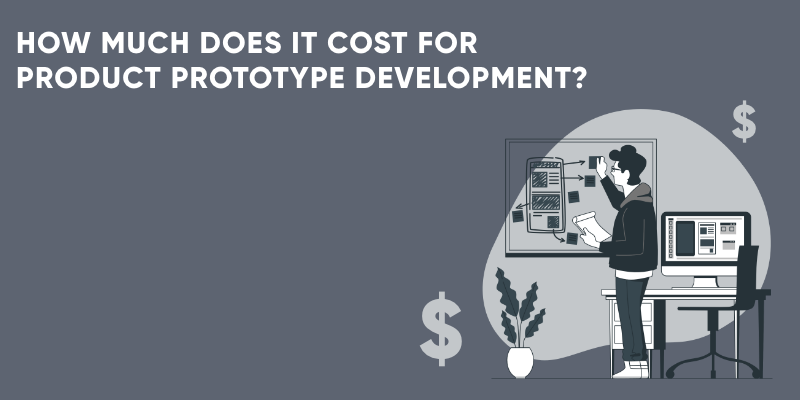
Prototype product development is a stage in the creation of a new product. An idea is the starting point for a new product. The concept is to make a statement that is in detail writing or we can merely speak.
Prototypes come in a variety of shapes and sizes. The first stage prototype is frequently used to validate the contents’ form and fit, as well as to establish the production methods and techniques required to manufacture the product. This can range from $500 to $1500.
A prototype, functional model, or preliminary form of the product helps to test size, fit, and possible merchandising. The prototype becomes the final product after multiple revisions.
You may need to hire a handyman or machinist for more complicated products.
The pre-production prototype is the next step, and it is, for all intents and purposes, the final version of the product.
In every manner, from how its manufactured to its appearance, packaging, and instructions, it should be identical to the end product.
This final-stage prototype is often expensive to produce – far more expensive than the real unit cost once the device is in full production—but it is often well worth the extra cost.
It’s most useful since it allows marketers and producers to go through every detail of a product in great detail, allowing them to discover possible problems before the product is released.
Preproduction prototypes can range from $3,000 to $10,000, depending on the number of iterations and the complexity of the part’s design.
How Long Does It Take To Develop A Product Prototype?
The length of time it takes for a product prototype to develop always depends on the type of prototype you can make.
A 3D CAD rendering of fundamental geometry? Or are you looking for a high-fidelity alpha prototype that looks and works like a real product?
Before you can determine how long it will take to develop a prototype, you must first determine what goals you want to achieve with it and where you are in the product development process.
These take only a few hours for early concept-level prototypes. Foam mock-ups, basic geometry 3D CAD renderings, and sketches are examples of prototypes.
However, for high-quality alpha prototypes, the minimum duration from concept to completion is 1-6 weeks.
But, once again, it all depends on how complicated your product is. It could take 6 weeks or more to develop an interactive, connected electronic device. A basic four-part mechanical product such as a coffee cup, on the other hand, is possible in a week or less.
Conclusion
Product prototypes are critical to your success if you want to make your ideas a reality for your users. Your focus during the prototype development stage will be on data-driven planning and preparation, with your target audience at the center of every design decision.
Simple but essential steps to assist you at every level of product prototyping. You can always contact us if you’re having difficulties and require expert prototyping services.
At Echoinnovate IT, we specialize in assisting our clients in achieving tremendous success with their product design, and we can do the same for you.
FAQs
What is a prototype?
A prototype is a representation of the solution you wish to build. Without involving a developer, you may mock every interaction and view so that the experience is in the same way as a full product. You can demonstrate all of the features you wish to include in your app (or any other type of solution in that instance), validate your concept, and double-check the overall UX approach. It’s up to you how you want to use a prototype, based on your needs and the stage of the project.
What are the different types of product prototypes?
- High-Fidelity User Prototypes
- Live-Data Prototypes
- Low-Fidelity User Prototypes
- Feasibility Prototypes
How much does it cost to create a product prototype?
It might be somewhere around $10,000 depending on the complexity of the parts’ design and several other factors.
